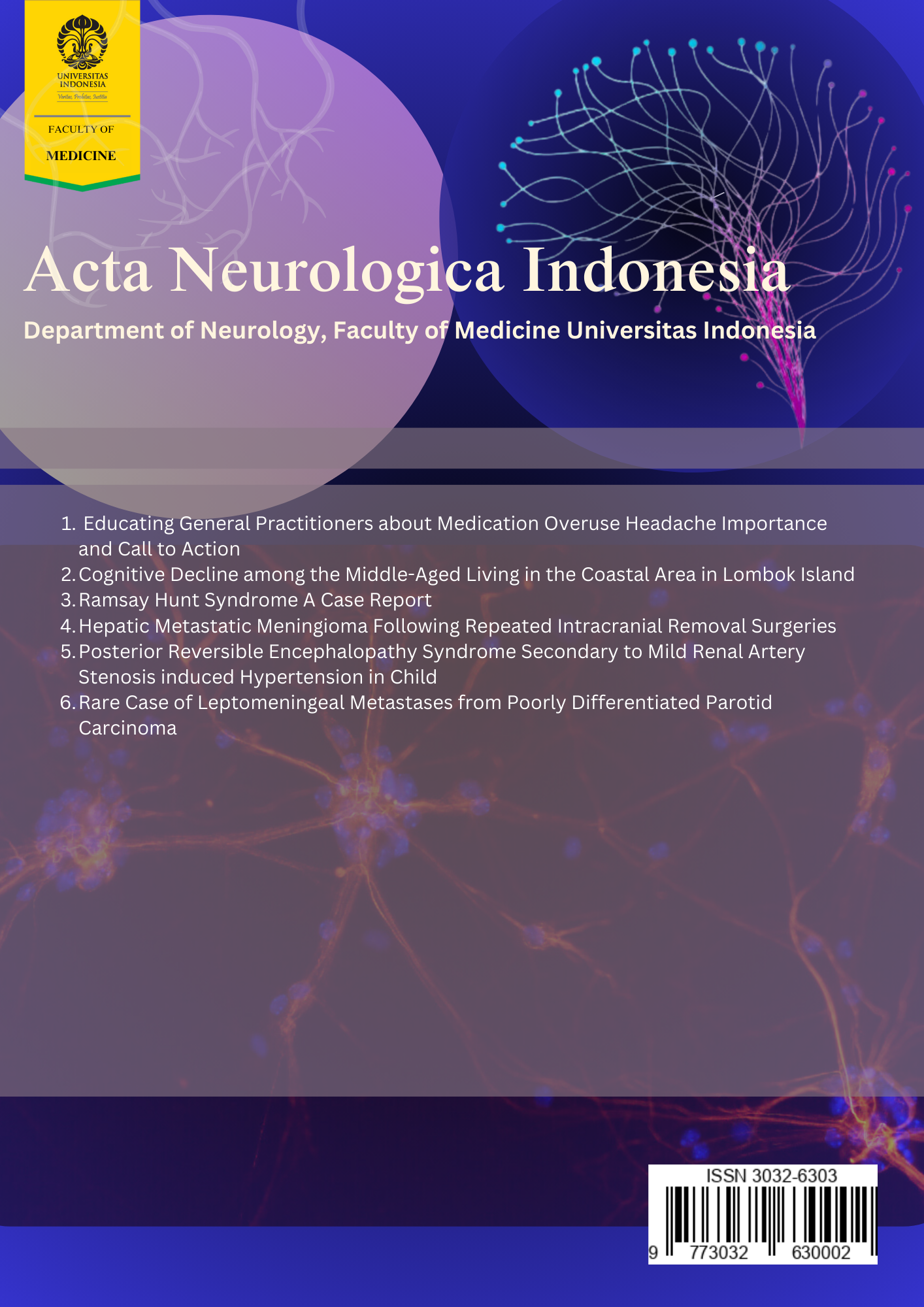RARE CASE OF LEPTOMENINGEAL METASTASES FROM POORLY DIFFERENTIATED PAROTID CARCINOMA
RARE CASE OF LEPTOMENINGEAL METASTASES
DOI:
https://doi.org/10.69868/ani.v3i01.43Keywords:
Leptomenigeal metastases, Poorly Differentiated, Parotid Carcinoma, DiagnoseAbstract
exceedingly rare and challenging to diagnose, requiring confirmation via imaging and cerebrospinal fluid (CSF) cytology. Clinical signs like secondary headache often signal critical intracranial involvement.
Case Report: A 27-year-old woman presented with severe headache, dizziness, and vomiting. She had a history of poorly differentiated parotid carcinoma with liver metastases and prior chemotherapy (CAF: cisplatin, doxorubicin, and fluorouracil). Physical exam revealed mild peripheral facial nerve palsy, ataxic gait, and tremor. High-dose dexamethasone and acetaminophen provided headache relief. CT brain imaging showed vasogenic edema with leptomeningeal enhancement in the right cerebellum and a 46% reduction in the parotid lesion. MRI of the nasopharynx identified leptomeningeal enhancement, notably in the right cerebellum, suggesting metastasis, along with fourth ventricle narrowing and ventricular dilation. CSF cytology revealed poorly differentiated malignant cells with pleomorphic nuclei. Craniospinal irradiation was planned.
Discussion: Leptomeningeal metastasis is an uncommon parotid carcinoma complication. Secondary headache, diffuse and bilateral, typically affects the C2-C3 dermatome and is accompanied by dizziness. Symptom relief with high-dose dexamethasone was observed. Definitive LM diagnosis combines CSF cytology and MRI leptomeningeal enhancement. As chemotherapy options for LM from parotid carcinoma are limited, craniospinal irradiation is the preferred treatment.
Conclusion: Leptomeningeal metastasis from poorly differentiated parotid carcinoma is extremely rare, confirmed by clinical signs, imaging, and CSF analysis. Severe secondary headache is a key indicator, and delayed diagnosis could prove fatal.
Downloads
Published
Issue
Section
License
Copyright (c) 2025 Acta Neurologica Indonesia

This work is licensed under a Creative Commons Attribution-NonCommercial 4.0 International License.


